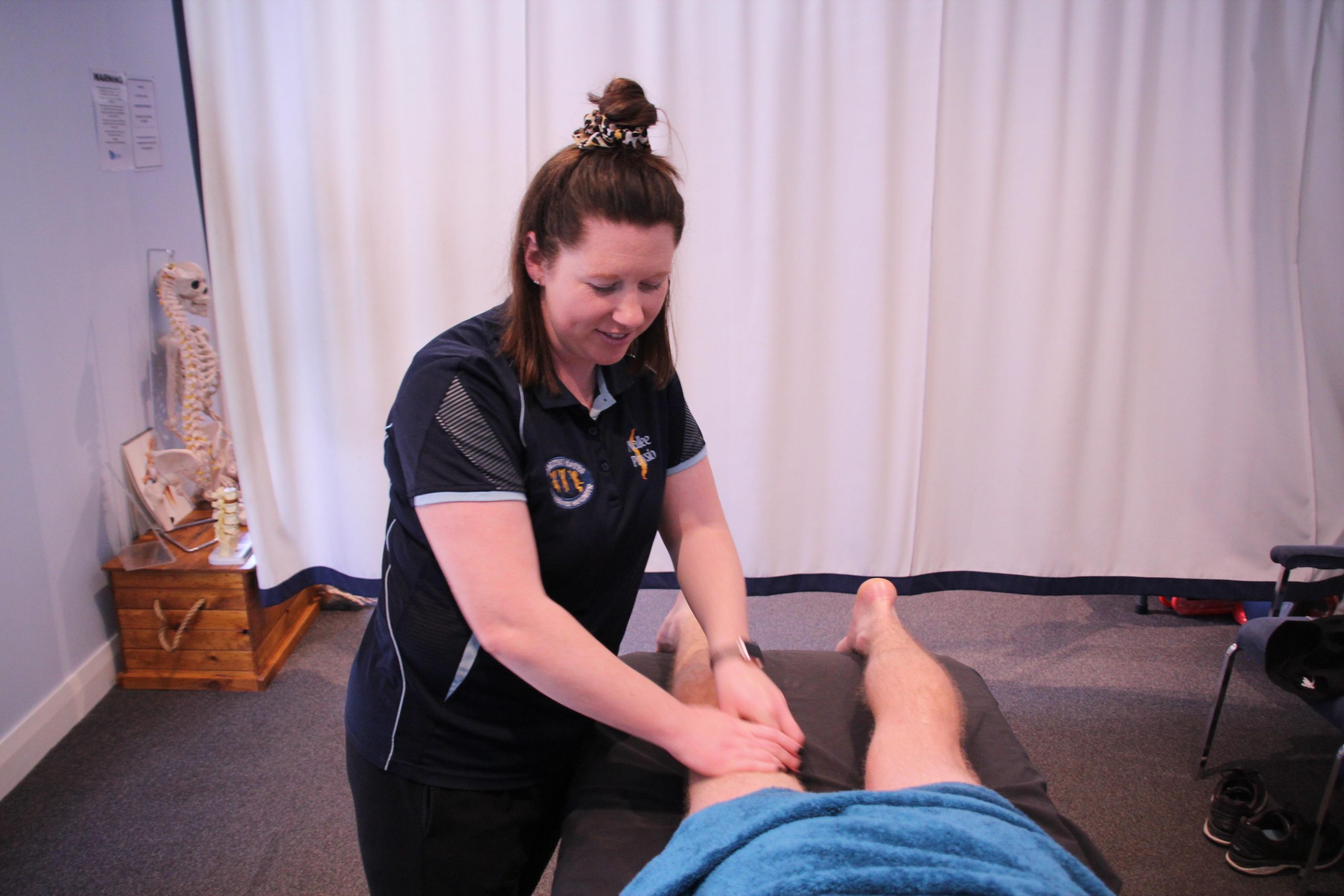What is Myotherapy?
Myotherapy is the assessment, treatment and management of musculoskeletal conditions, which may cause muscular dysfunction and pain thus affecting movement and mobility. Myotherapists utilisee a variety of treatment techniques to restore and maintain the normal integrity of the soft tissue structures (muscles, tendons, ligaments and fascia).
Trigger points within muscles are an example of muscle dysfunction that can cause deep aching pain, local tenderness, referred pain limiting strength and flexibility. Utilising palpation skills Myotherapists can identify trigger points and deactivate them using various soft tissue manipulation techniques.
Muscular dysfunction can be caused by trauma, overload or misuse of muscles arising from occupational, sporting or recreational activities. (IRMA, June 2011)
What happens now?
A Myotherapy consultation with Sam will typically commence with a thorough examination; this is done by examining various muscles, joints and neurological testing. Sam then combines this with manual palpation of muscles and joints, Sam’s aim is to identify the cause of one’s pain to ensure quick, effective and long lasting results.
Sam delivers a variety of techniques including:
- Deep-tissue Massage
- Soft-Tissue Massage
- Cupping
- Manual Lymphatic Drainage
- Dry Needling
- Pregnancy Massage
- Postural Education
- Stretching and Strengthening Techniques

What is deep tissue massage?
Deep tissue massage is a type of massage therapy that focuses on mobilising deeper layers of muscles and connective tissue.
It is especially helpful for chronically tense and contracted areas such as stiff necks, low back tightness, and sore shoulders.
Some of the same strokes are used as classic massage therapy, but the movement is slower and the pressure is deeper and concentrated on areas of tension and pain.
Also assists in the breakdown of active Trigger points within the muscle and increasing blood flow to the area, therefore encouraging new oxygenated blood in the area to assist with muscle healing and relaxation.
How does deep tissue massage work?
When there is chronic muscle tension or injury, there are usually adhesions (bands of painful, rigid tissue) in muscles, tendons, and ligaments. Adhesions can block circulation and cause pain, limited movement, and inflammation.
Deep tissue massage works by physically breaking down these adhesions to relieve pain and restore normal movement. To do this, the massage therapist often uses direct deep pressure or friction applied across the grain of the muscles.
Will deep tissue massage hurt?
At certain points during the massage, most people find there is usually some discomfort and pain.
It is important to tell the massage therapist when things hurt and if any soreness or pain you experience is outside your comfort range.
There is usually some stiffness or pain after a deep tissue massage, but it should subside within a day or so. The massage therapist may recommend applying heat to the area after the massage.
What conditions is deep tissue massage used for?
Unlike classic massage therapy, which is used for relaxation, deep tissue massage usually focuses on a specific problem, such as:
- Chronic pain
- Limited mobility
- Recovery from injuries (e.g. whiplash, falls, sports injury)
- Repetitive strain injury, such as carpal tunnel syndrome
- Postural problems
- Osteoarthritis pain
- Fibromyalgia
- Muscle tension or spasm
- Muscle Imbalance
- Acute Ry Neck (e.g. woke up with pain and stiffness of neck)
If you would like any further information on the above treatments please use our contact page.


